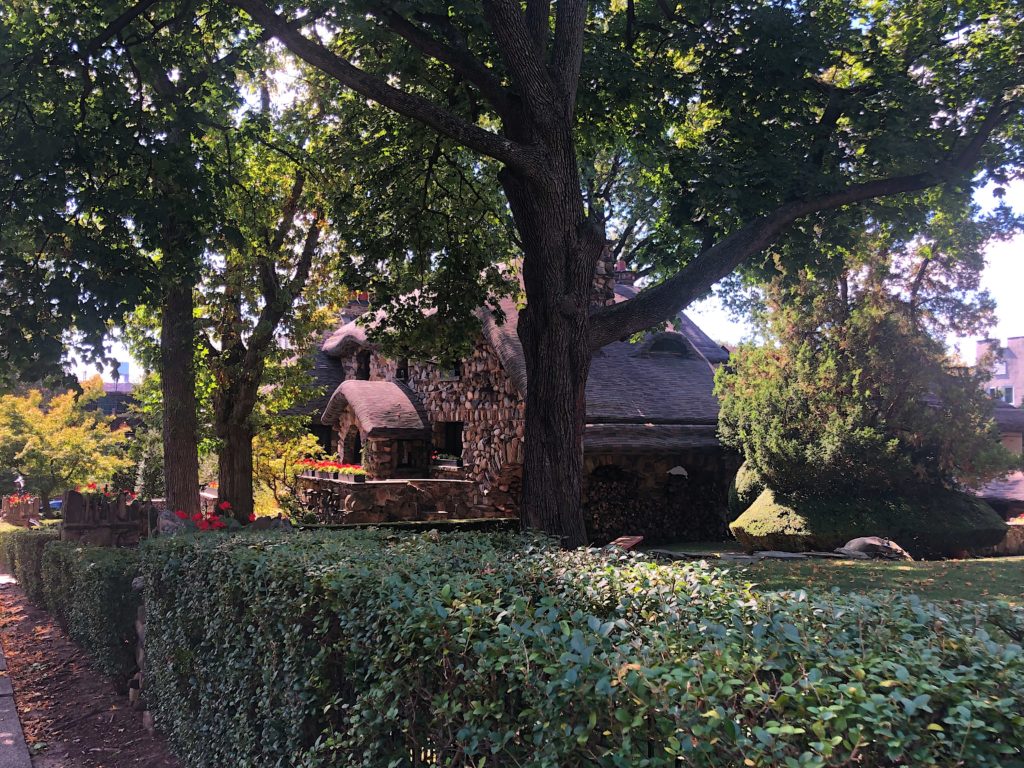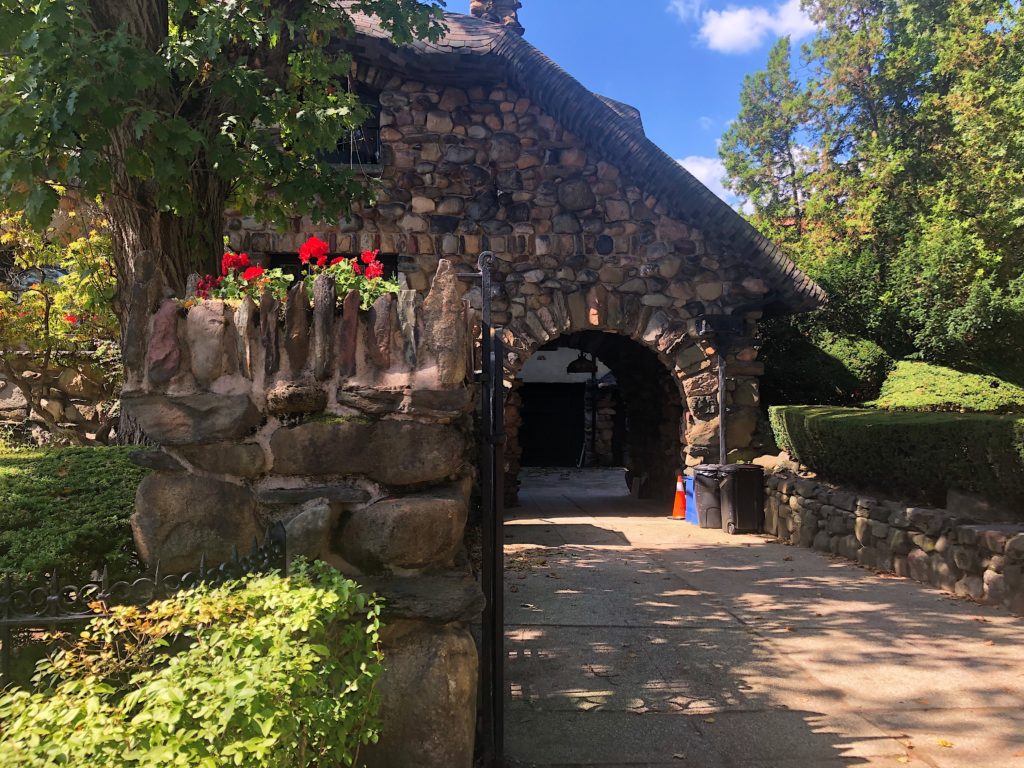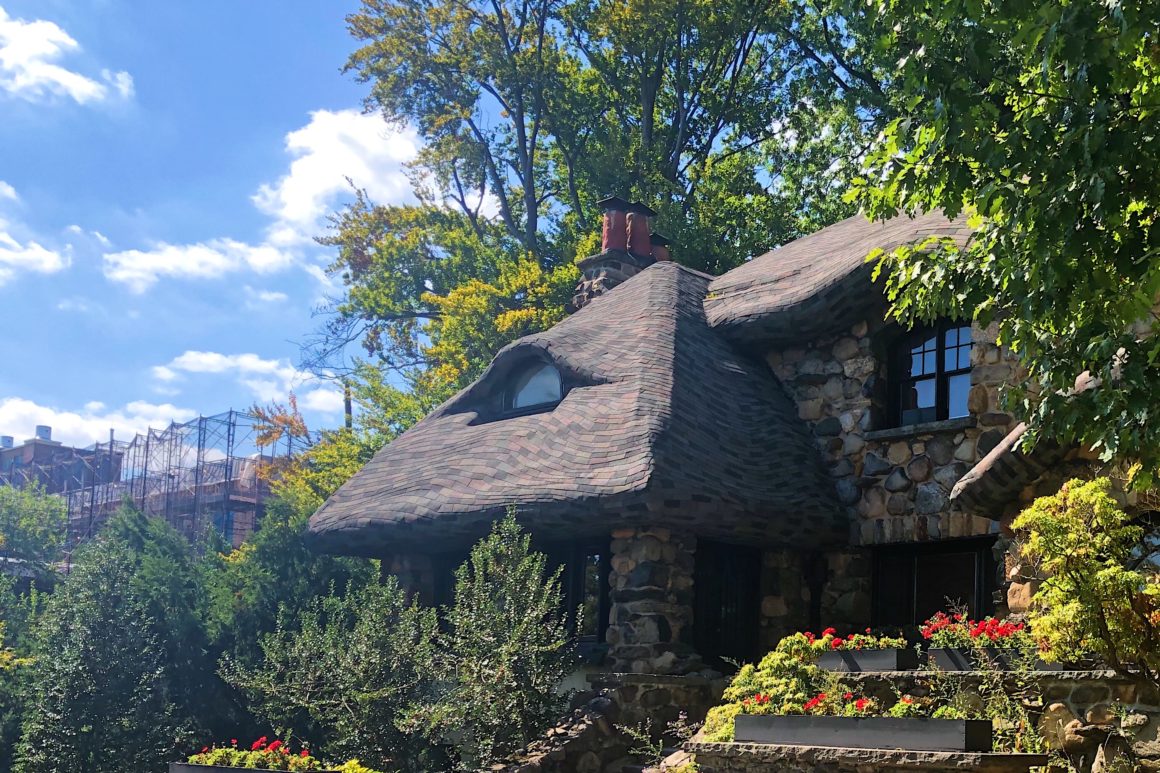Narrows avenue in Bay Ridge is quite the sight. Every block presents impressive real estate treasures, but it doesn’t take long to spot the finest of them all. Uncut stones of different colors, shapes, and sizes, pressed against each other by the cotton candy-like styled asphalt roof, make any passerby’s mouth water.

The name of the Gingerbread House, the architectural masterpiece of Bay Ridge, comes from its unequivocal resemblance to the house in Hansel and Gretel’s fairy tale. Despite its undeniable charm, it went from being a dream to a kind of real estate nightmare for the Fishman family, who bought it more than three decades ago.
The stunning mansion was landmarked in 1988 and described as “the most magnificent residence in all of New York City” by the Daily News in 2013. Yet, in the course of a decade, after four different real estate agencies tried to sell it, the price of the mansion plummeted 18%, and still, no one wanted to buy it. In 2009, Jerry Fishman decided to sell the home for $12 million. In 2017, the enchanted house was pulled from the market at $9 million.
As with any good fairy tale, this one too started with a dream. Fishman, the current owner, told the Daily News he brought his wife Diane to the house on their first date and told her he “would own this house someday.” He kept his promise in 1983, when the Fishmans became the fourth owners. Fishman went as far as saying he attributes his good luck to the house, “There was life magic,” he said to the Daily News.
But in 2009, when the family decided to relocate near their parents in Florida, according to an article in the New York Post from that year, that’s where the dream ends. Unlike Hansel and Gretel, buyers didn’t seem interested in following the trail of breadcrumbs that led to the whimsical house. This seemingly irresistible property seemed to turn untouchable.
Before it became the Gingerbread House, it was known as Harry and Jessy Jones’ House. The house was designed in 1917 for Harry Jones, a major shipping merchant, and it was landmarked in 1988, according to Zodet Negron, a spokesperson for the Landmark Preservation Committee. “Buildings are landmarked because of their historical and cultural significance, besides their architectural value,” she said.
Is landmarking the reason it has had difficulty on the market? Being a designated landmark, the Gingerbread house comes with some strings attached. Yet according to Negron, those strings should not be enough to hold back potential buyers. Any change to the exterior would need to be approved from the commission, she noted, but the internal uses of the house is not regulated, unless the building is an interior landmark, which is not case for this mansion. The Commission, Negron said, “is concerned with preserving features of the exterior, but we don’t prevent change.”

Still, the process of potential remodeling of this house is not as easy as for others. The owners would have to apply by filling out a form explaining what exactly they would be modifying and how. If the changes are small, the Commission staff would handle the process and the changes could be approved in a couple of weeks. On the other hand, if the changes were more substantial, they would have to pass through the commission, and that could take months.
Yet a sort of myth has grown around landmarked residential buildings, according to Negron, which doesn’t necessarily correspond to the truth. “There is always a lot of misinformation about the implications of a landmark,” she said. “Regular maintenance and repair don’t need permission.”
Could the mansion’s landmark status have played the role of the witch in the Hansel and Gretel tale, and sent possible buyers running? It seems unlikely that this factor alone would be enough to make buyers pass on such an inviting acquisition.

But the press didn’t help. From 2009 to 2017, the dream house was trapped in the listings just like Hansel and Gretel in the witch’s cage, and journalists took notice. “The owners had a bad experience with the press,” said Raymond Reis, from Keller Williams NYC, the last real estate agent that listed the house. “Articles were published that made them and their property look bad,” he added. “People criticized them for asking more money than what the house is actually worth.”
Curbed, a real estate blog, described the owner’s price decisions as “trying their luck.” A Curbed post in 2016 addressed how real estate agents had to get creative by incorporating drone video tours of the house to try to spark some interest in the “stagnant property,” concluding that “that didn’t do much by way of sales.” Could the press alone have embittered potential buyers?
Maybe not. The $9 million latest price may be another factor. “It’s a unique house but a difficult price point,” says Rita van Straten from Douglas Elliman, one of the four real estate agencies the Gingerbread house was listed in.
“It’s hard to sell any house at that price,” admits Straten. “It’s the most special house I have ever seen, and I wish I could have sold it,” Straten said. “It’s just a difficult price. You don’t find people like that, with that kind of money.”


Leave a Reply